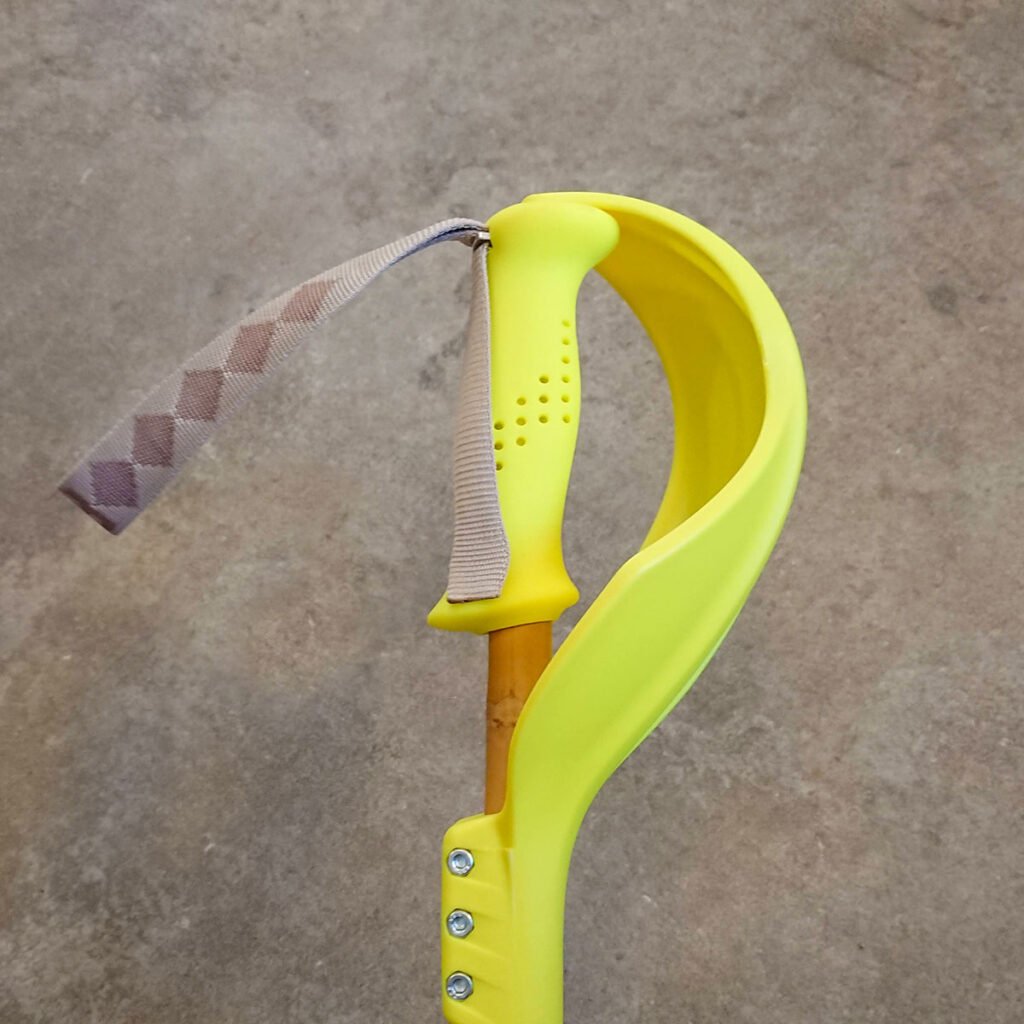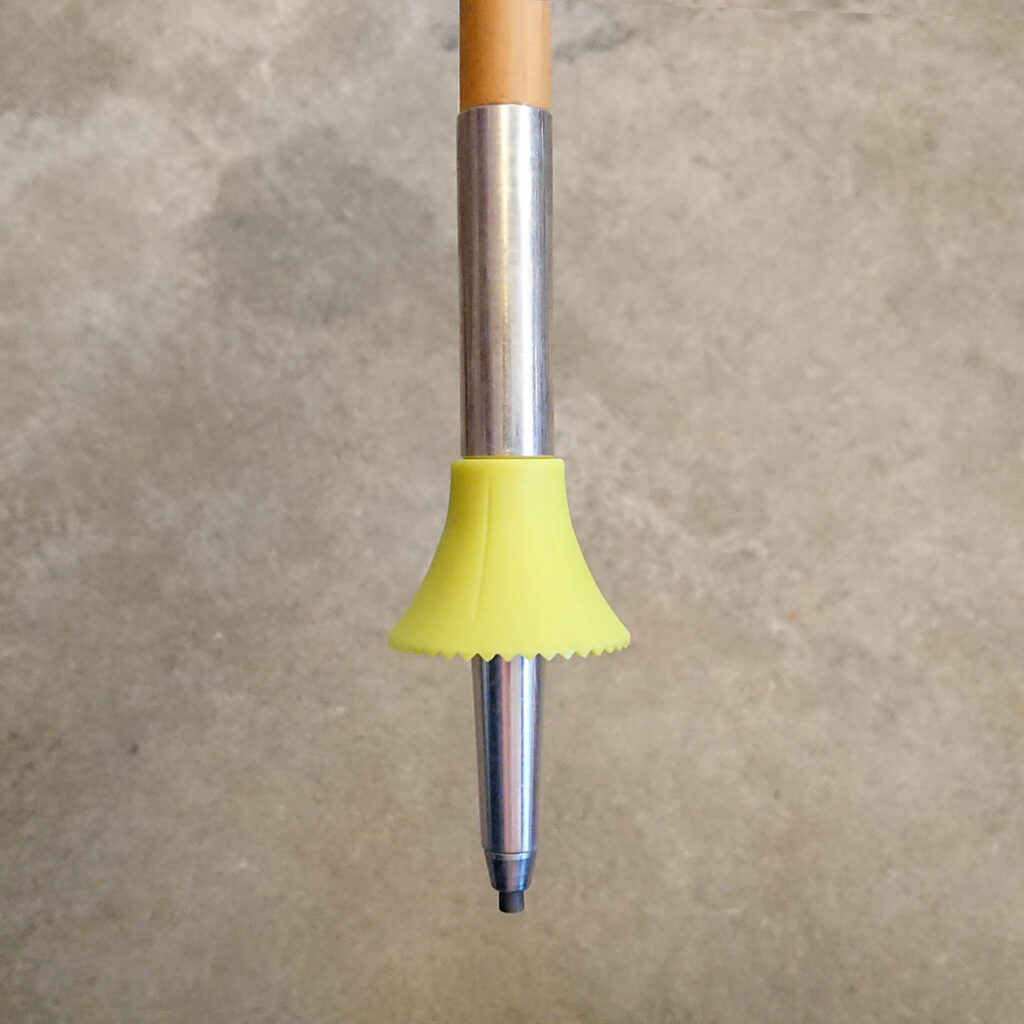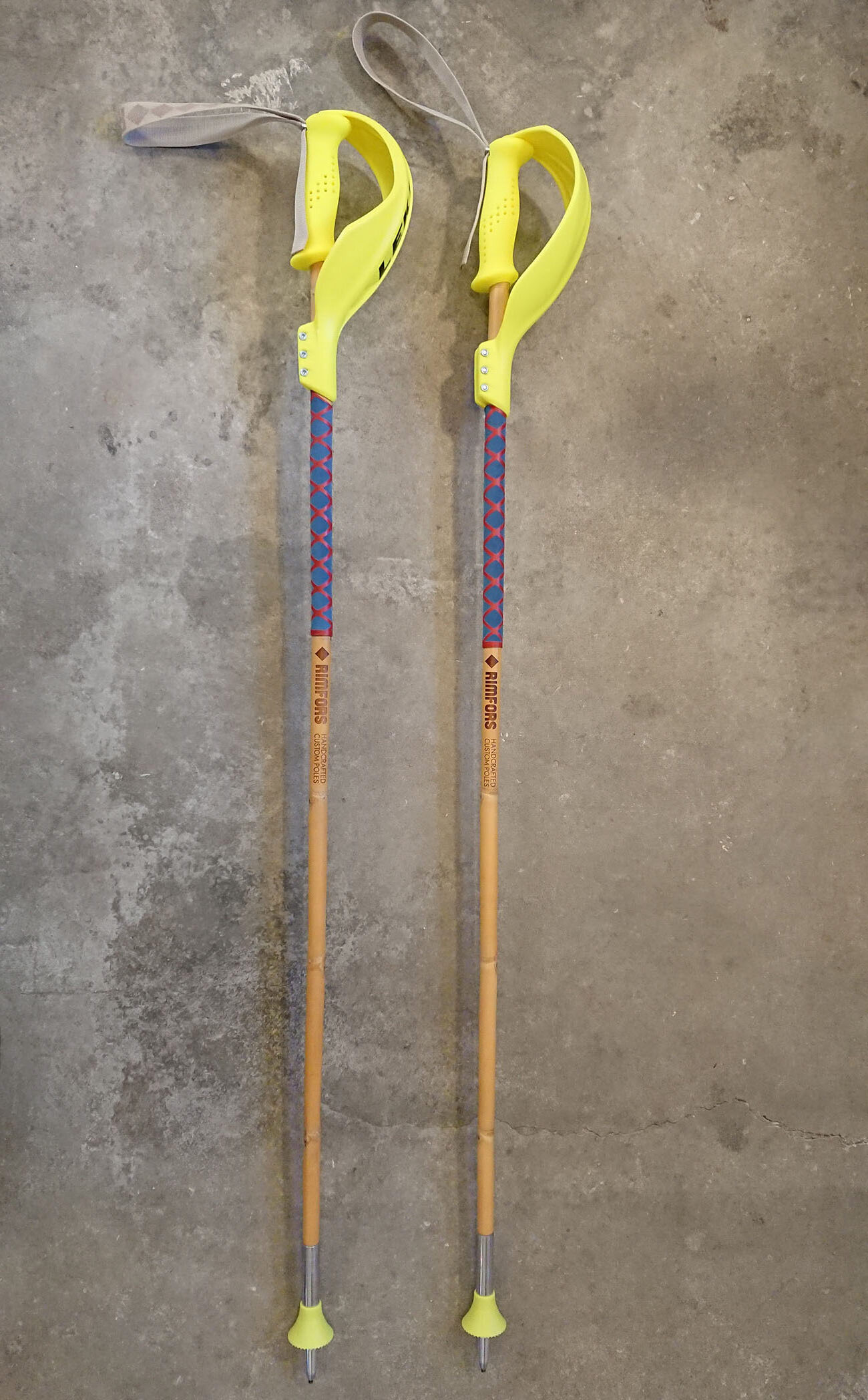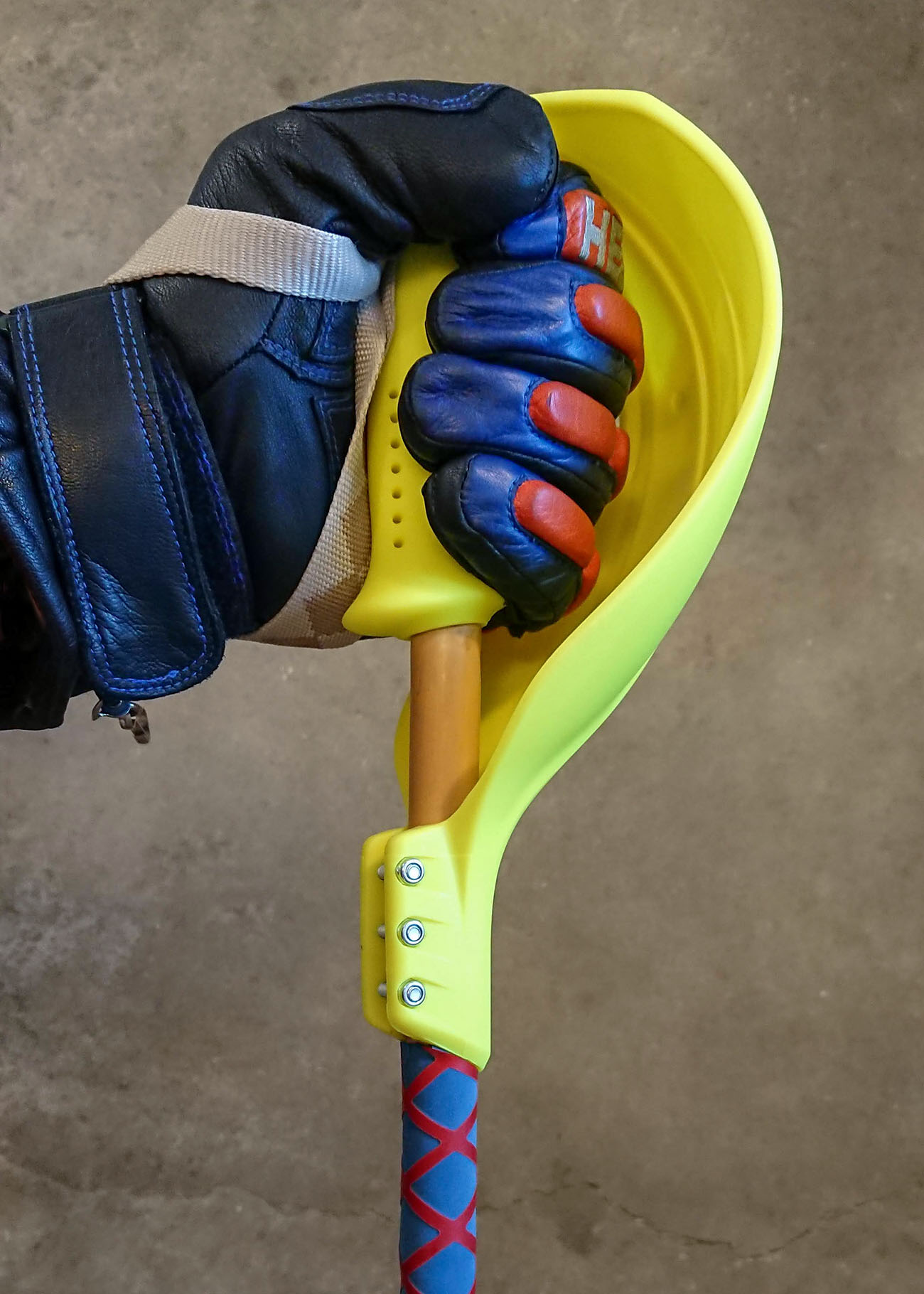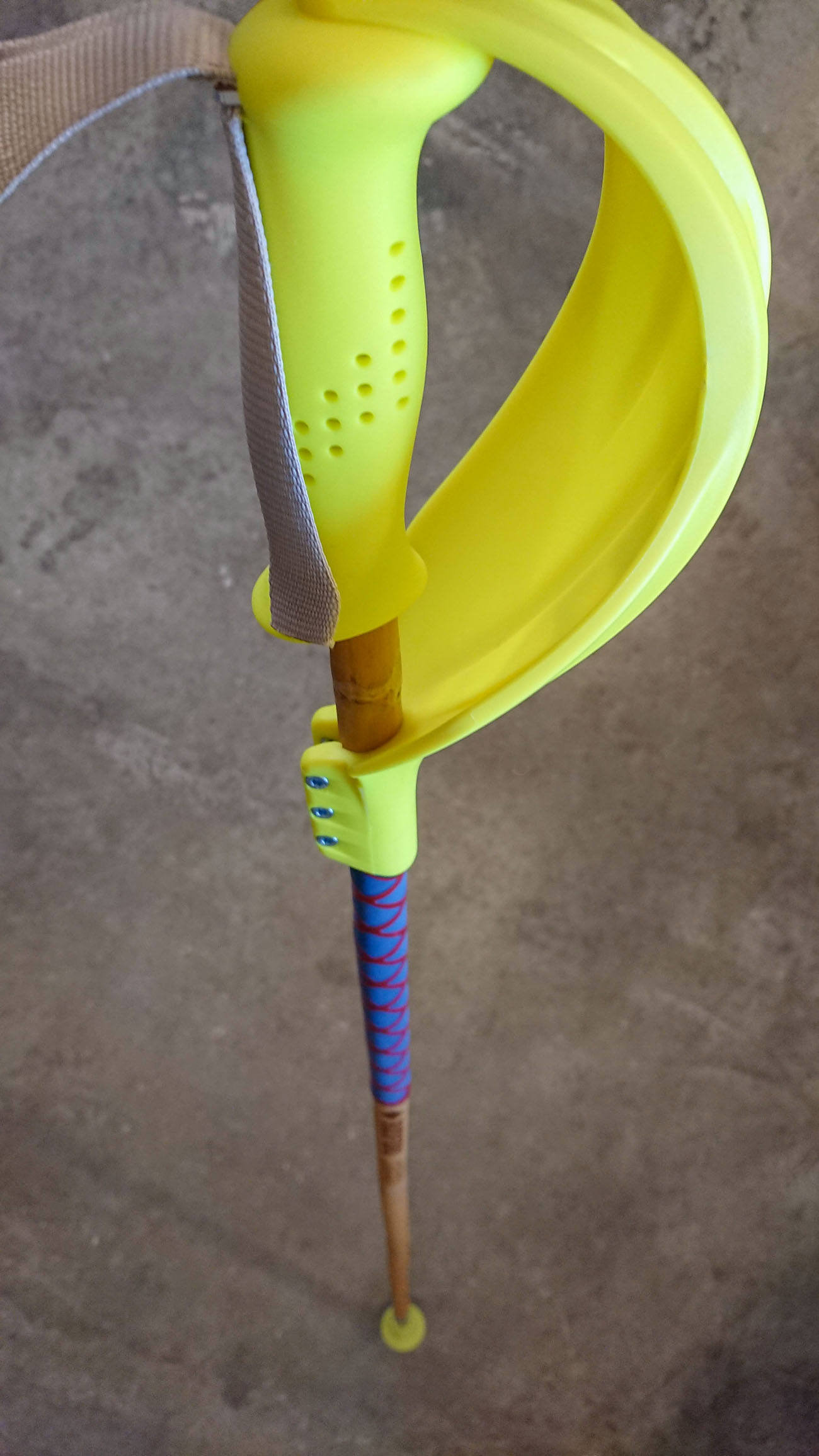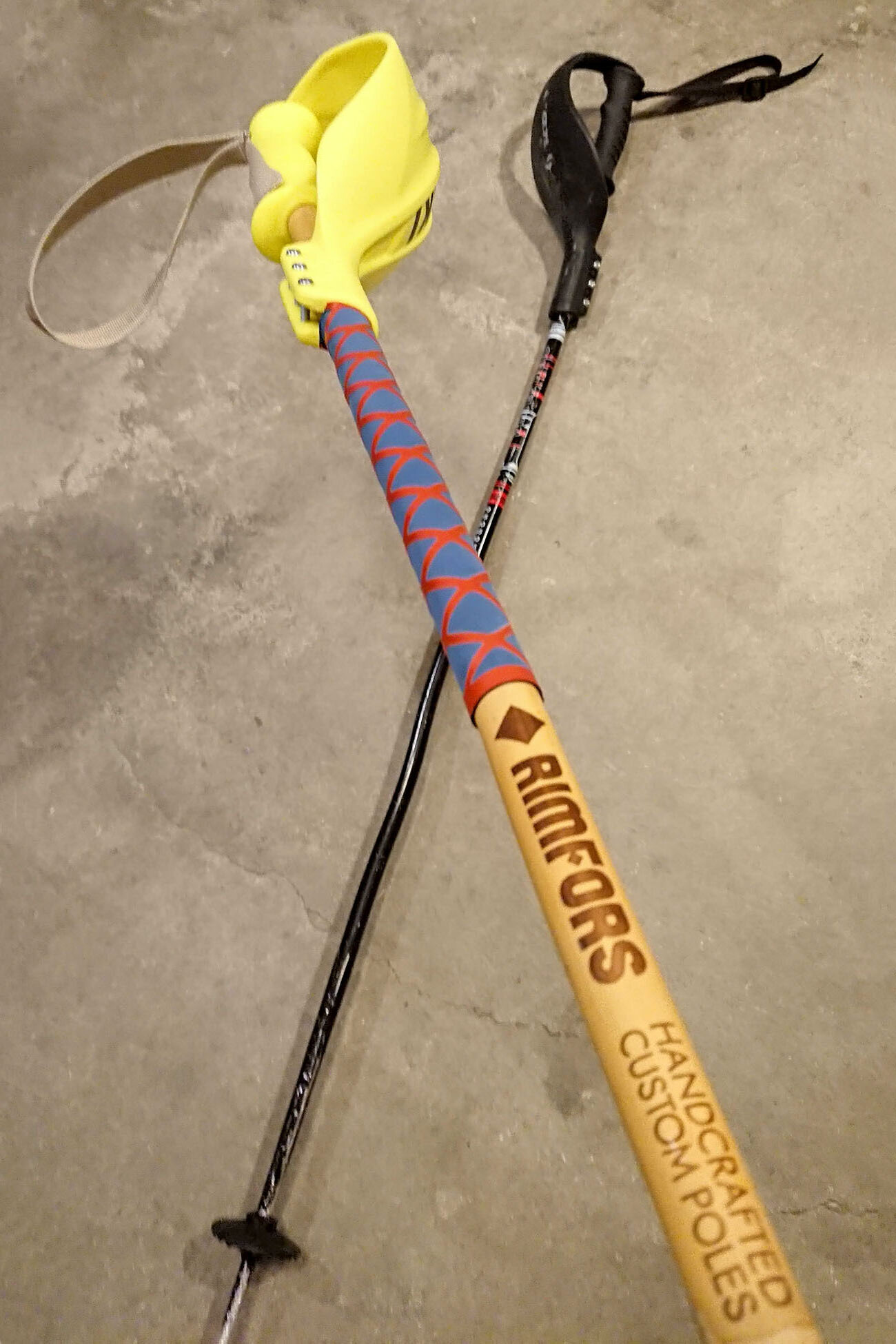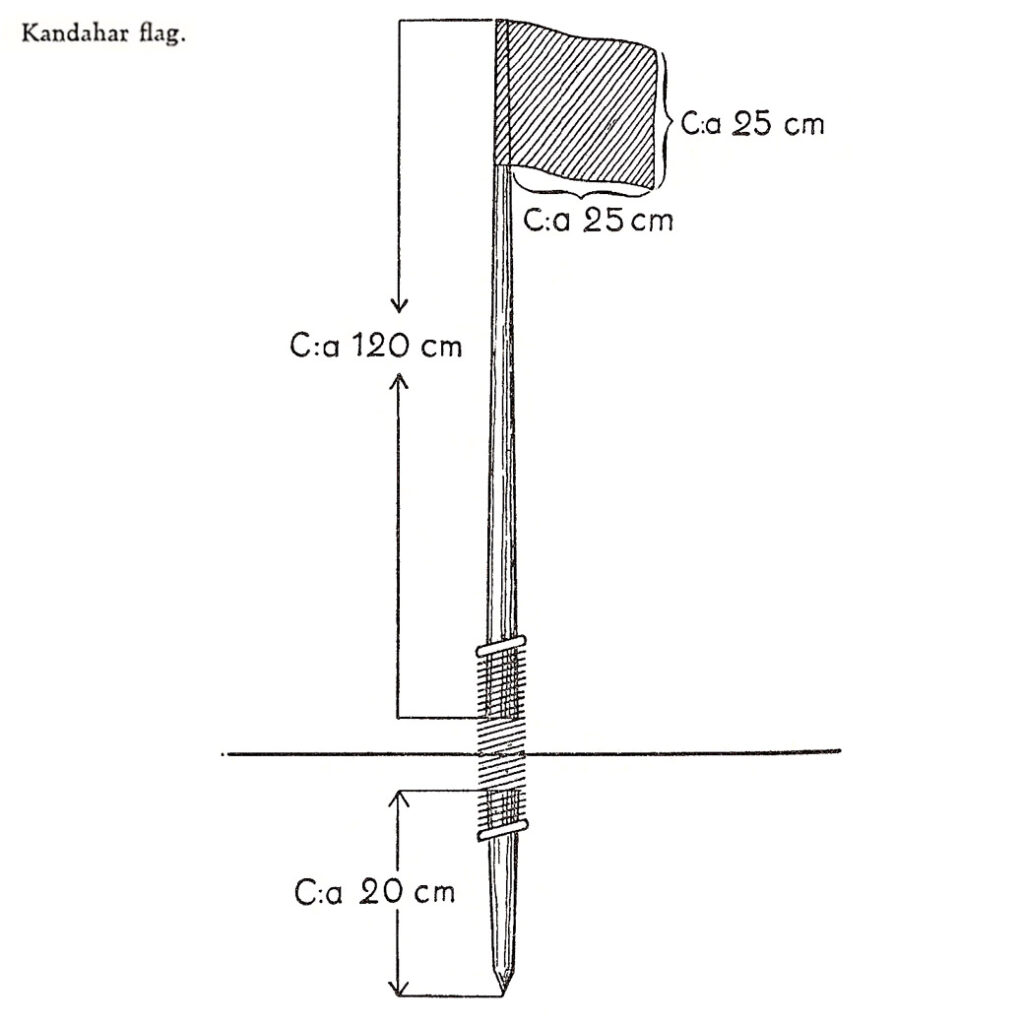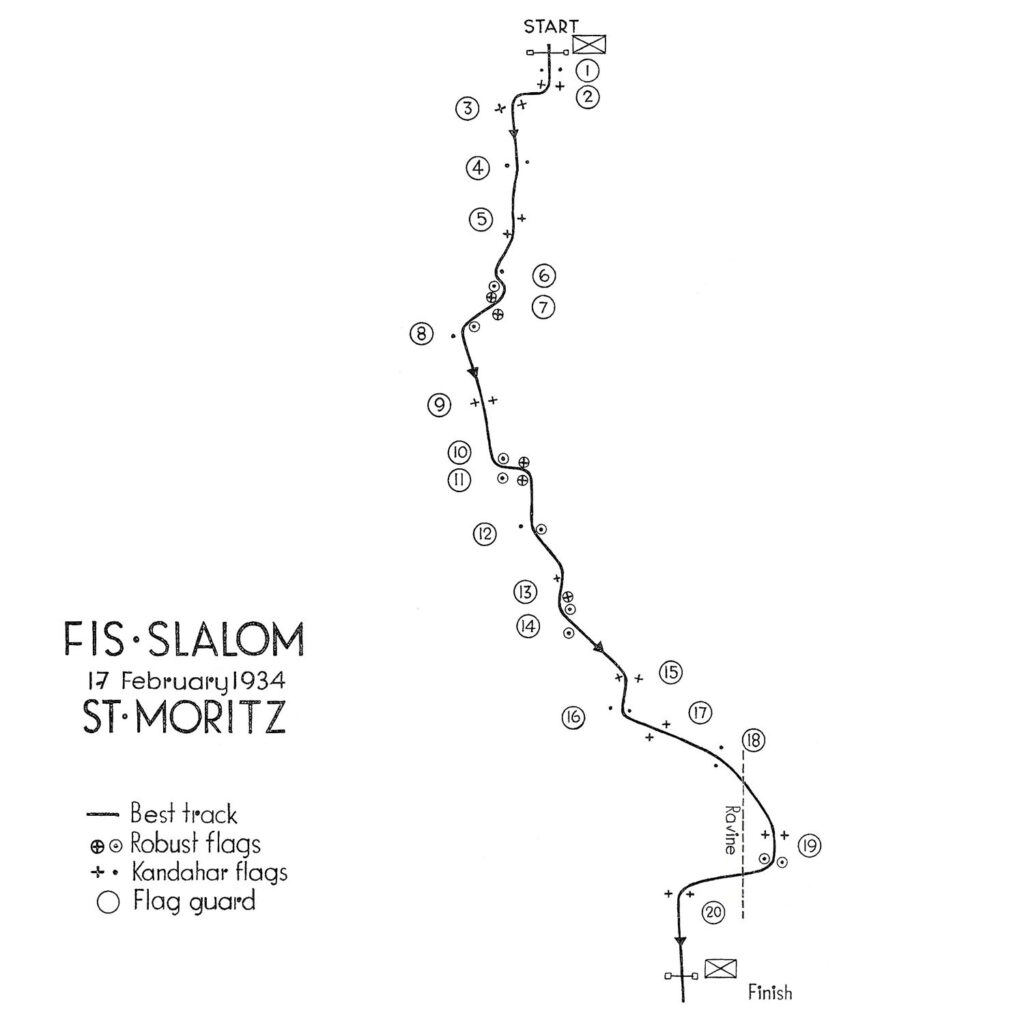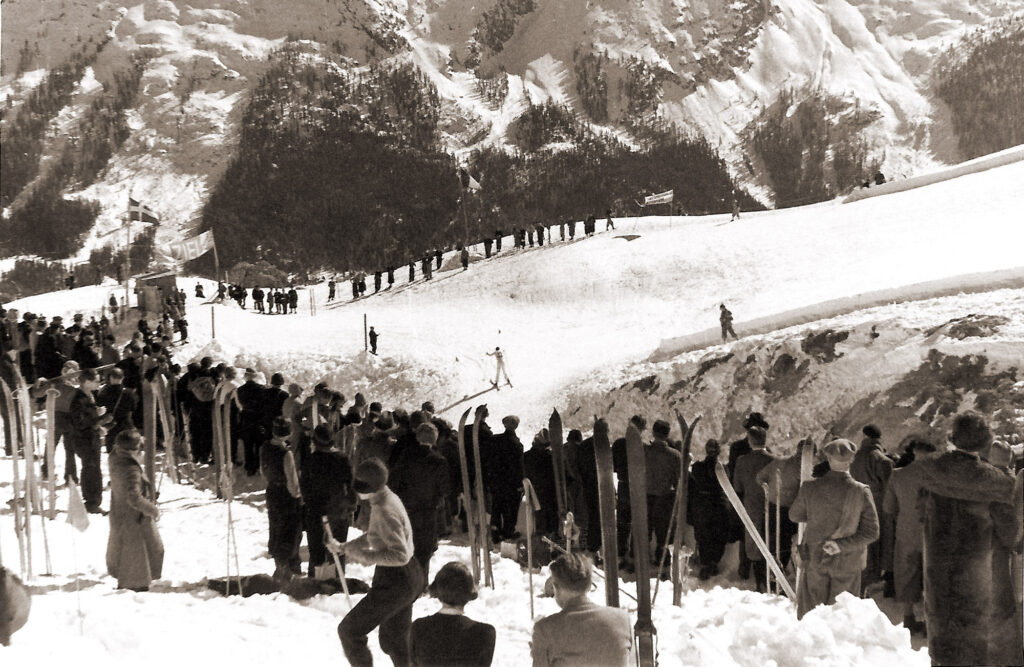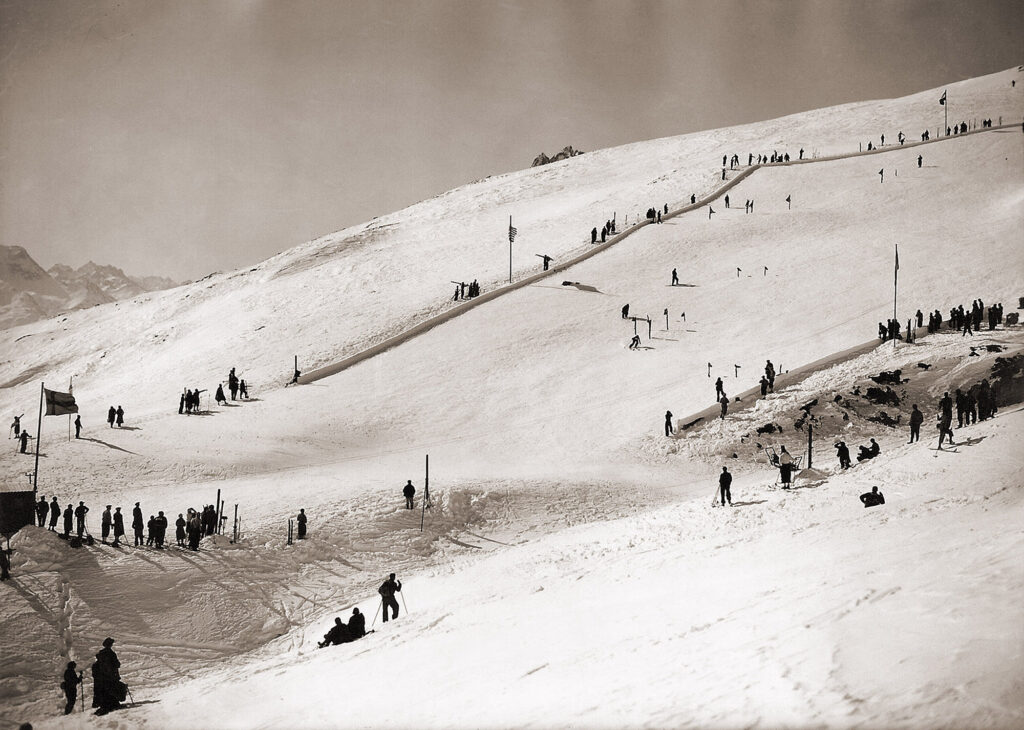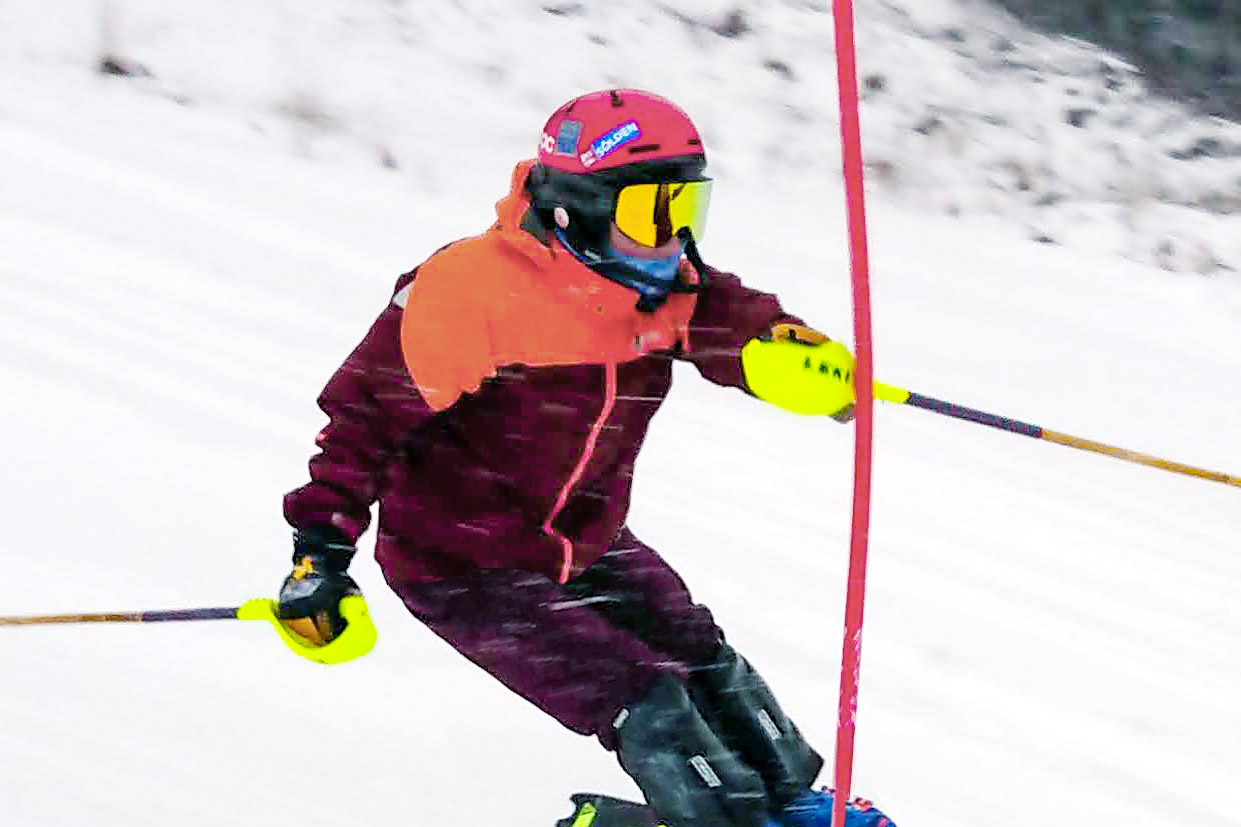Can you race and smash slalom gates with bamboo ski poles? Do they hold up for that? A hundred years ago, people competed in slalom using both bamboo ski poles and hinged gates, the so-called Kandahar flags. They were 120 cm “long” wooden sticks with a flag at the top and a spring by the foot, sparsely scattered over the race course (see below). At that time the gates were hardly attacked with the ski poles. Nowadays, however, racing is tight and tough, and it hits hard. So, will a pair of bamboo ski poles work for slalom racing today? Do they withstand the blows from the gates?
Last winter I built a pair of “race poles” with gate guards for my oldest son. He had outgrown his black Komperdells, which were also deformed like overcooked spaghetti. In my quest to offer ski poles in all colors, Tehnomat had manufactured bright neon yellow grips for me. And along with their cone-shaped speed baskets, that also match Leki’s gate guards, and a pair of near-solid bamboo canes, I had everything we needed.
Finally testing bamboo racing poles
Unfortunately, the training season in Vångabacken (our local ski slope) ended before my son had the chance to test his new poles. This winter, however, the season started early. And even though it also ended early, we managed to squeeze in a few weeks of evening training at our local slope, plus a camp at Valfjället. So, finally the SL poles made of Calcutta bamboo with fluorescent yellow punch guards could be put to the test.
After the camp the training season was over, unfortunately. We were out of snow. But for about twenty hours in total, the bamboo batons battled the red and blue poles on the courses when summing up the short season. The poles, or perhaps rather the bamboo, braved the bangs. A full season to test would of course be optimal. But YES, it works fine to race slalom and hit the gates with bamboo ski poles!
/Fabian Rimfors
SL bamboo poles and historic photos
